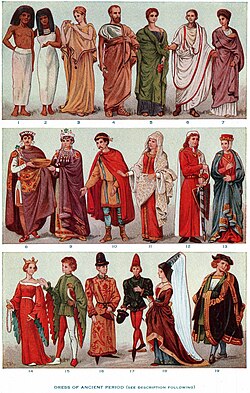
A tea gown or tea-gown is a woman's dress for informal entertaining at home. These dresses, which became popular around the mid-19th century, are characterized by unstructured lines and light fabrics. Early tea gowns were a European development influenced by Asian clothing and historical approach from the 18th century which led to the renaissance time period of long and flowing sleeves. [1] [2] Women, as a strict rule, never upon any circumstance would wear a traditional hat or veil whilst inside and consuming tea and cakes in mid afternoon traditions. Part of this European sense of fashion came from the Japanese kimono. [3]
Contents
Tea gowns were intended to be worn without a corset or assistance from the maid; however, elegance always came first. [4]
During the 19th century, it was not appropriate for women to be seen in public wearing a tea gown. [4] They were intended to be worn indoors with family and close friends during a dinner party. [4] [5]
Although tea gowns were meant for midday wear, they could be worn into the evening. [5] Women started wearing tea gowns in the evening for dinner or certain events at home with close friends and family by 1900. [5] Tea gowns intended for day wear usually had high necks, while evening tea gowns had lower necks. [5]
